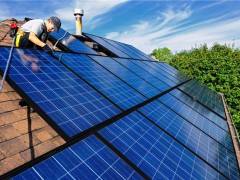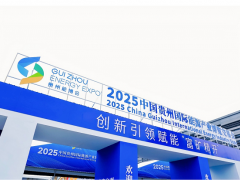據(jù)管道&天然氣雜志網(wǎng)7月15日?qǐng)?bào)道,全球大約有28個(gè)商業(yè)碳捕獲利用和存儲(chǔ)設(shè)施(CCUS),每年總?cè)萘繛?000萬噸,但只占能源相關(guān)二氧化碳排放總量的0.12%。關(guān)于國(guó)際能源機(jī)構(gòu)(IEA)2050年的凈零排放情況,CCUS在脫碳經(jīng)濟(jì)中發(fā)揮了重要作用,根據(jù)數(shù)據(jù)和分析公司GlobalData稱,生產(chǎn)能力需要提高190倍,每年達(dá)到76億噸。
2021年5月25日,美國(guó)國(guó)會(huì)通過了兩黨合作的CATCH法案,將每公噸二氧化碳的碳捕獲信用額從50美元提高到85美元。這一政策將成為整個(gè)價(jià)值鏈中許多油氣利益相關(guān)者的巨大驅(qū)動(dòng)力,因?yàn)槟壳鞍l(fā)電中捕獲碳的成本為每噸二氧化碳40-80美元。
能源部門約占溫室氣體排放(GHG)總量的四分之三。根據(jù)IEA的數(shù)據(jù)顯示,2018年二氧化碳排放量達(dá)到335億噸/年的高點(diǎn),2019年和2020年分別降至334億噸/年和315億噸/年,主要由于新冠肺炎經(jīng)濟(jì)危機(jī)。與總排放水平相比,CCUS的容量相對(duì)較小,需要全球政府和行業(yè)領(lǐng)導(dǎo)的共同努力來加大CCUS設(shè)施的部署。
Global Data上游油氣分析師Steven Ho表示,目前CCUS項(xiàng)目的發(fā)展主要是出于商業(yè)和商業(yè)考慮。在28個(gè)作業(yè)設(shè)施中,有22個(gè)是由于利用CO2進(jìn)行強(qiáng)化采油作業(yè)所產(chǎn)生的額外經(jīng)濟(jì)價(jià)值而受到激勵(lì)的。然而,在2020年期間,計(jì)劃新建的碳捕獲和儲(chǔ)存設(shè)施顯著增加。到2028年,這些新增產(chǎn)能將達(dá)到7200萬噸。
他表示,許多已經(jīng)在建的設(shè)施都是在發(fā)電領(lǐng)域。去年,他們占新增產(chǎn)能的67%。就燃煤或化石燃料發(fā)電廠而言,改造現(xiàn)有發(fā)電廠是近期最具成本效益的選擇,特別是在仍嚴(yán)重依賴化石燃料和煤炭的亞洲新興經(jīng)濟(jì)體。預(yù)計(jì)到2025年,化學(xué)生產(chǎn)和氫氣生產(chǎn)行業(yè)的額外CCS能力也將商業(yè)化開發(fā),分別增加約1400萬噸/年和540萬噸/年的碳捕獲能力。
隨著越來越多的企業(yè)開始對(duì) CCUS 表現(xiàn)出興趣和投資,CCUS 產(chǎn)業(yè)樞紐和集群的形成變得更加普遍。這可以通過擴(kuò)大規(guī)模經(jīng)濟(jì)和降低投資風(fēng)險(xiǎn)使所有有關(guān)各方受益。這些樞紐中心的工作是將二氧化碳流聚集、壓縮、脫水,并將其從集散地輸送到存儲(chǔ)地。未來氫需求的增加也是增加CCS產(chǎn)能的激勵(lì)因素。將CCS添加到主要的蒸汽甲烷重整過程中,其經(jīng)濟(jì)成本比使用可再生電力通過電解生產(chǎn)氫氣等要低。
Ho繼續(xù)道,2030年后,進(jìn)一步部署碳捕獲設(shè)施很有可能彌補(bǔ)水泥等難以減少的行業(yè)的剩余碳排放,并要求到2050年捕獲高達(dá)76億噸/年的二氧化碳,以實(shí)現(xiàn)凈零排放。
郝芬 譯自 管道&天然氣雜志網(wǎng)
原文如下:
Globaldata: Significantly More Carbon Capture Infrastructure Needed to Achieve Net-Zero Emissions
There are approximately 28 commercial Carbon Capture Utilization and Storage facilities (CCUS) globally, with a total capacity of 40 Megatons per annum (Mtpa), but accounting for only 0.12% of total energy-related CO2 emissions. In reference to the net-zero emissions by 2050 scenario by International Energy Agency (IEA), CCUS plays a significant role in a decarbonized economy and capacity needs to be ramped-up by 190-fold, and to as much 7.6 Gigatons per annum (Gtpa), according to GlobalData, a data and analytics company.
On May 25, 2021, U.S. Congress passed the bipartisan CATCH Act to increase the carbon capture credit from $50 to as high as $85 per metric ton of CO2. This policy will be a huge driver for many oil and gas stakeholders across the value chain, as the current cost to capture carbon in power generation ranges from $40 to $80 per ton of CO2.
The energy sector accounts for approximately three quarters of total greenhouse gas (GHG) emissions. According to IEA, CO2 emissions reached a high of 33.5 Gtpa in 2018 and have reduced to 33.4 Gt in 2019 and 31.5 in 2020, mainly due to the Covid-19 economic crisis. In comparison to the total emissions level, CCUS capacity is relatively insignificant and requires a collective effort from global government and industry leaders to ramp up the deployment of CCUS facilities.
“The current development of CCUS projects is mainly driven by business and commercial considerations. Out of the 28 operational facilities, 22 are incentivized by the additional economic value created from using CO2 for Enhanced Oil Recovery (EOR) operations,” said Steven Ho, upstream oil & gas analyst at GlobalData. “However, during 2020 there has been a noticeable increase in the planned new carbon capture and storage facilities. These would add up to 72 Mtpa of additional capacity by 2028.”
Many of the facilities already in construction are in the power generation sector, he said. In 2020, they account for 67% of additional capacity.
“For coal or fossil fuel power plants, retrofitting existing plants is the most cost-effective option in the near term, especially in growing economies in Asia that are still heavily dependent on fossil fuel and coal,” Ho said. “Additional CCS capacity in chemical production and hydrogen production industries are also expected to be commercially developed by 2025, adding up to approximately 14 Mtpa and 5.4 Mtpa of carbon capture capacity, respectively.”
As more parties are beginning to show interest and investing in CCUS, the formation of CCUS industrial hubs and clusters become more common. These can benefit all involved parties by increasing economies of scale and reduce investment risk. These hubs work to aggregate, compress, dehydrate and transport CO2 streams from clusters of facilities to storage sites. An increase in future hydrogen demand is also an incentive for additional CCS capacity. Adding CCS to the dominant steam methane reformation process, has a lower economic cost than, for instance, producing hydrogen through electrolysis using renewable electricity.
Ho continues: “Beyond 2030, further deployment of carbon capture facilities becomes a very likely scenario to compensate for the remaining carbon emissions that remain from a hard-to-abate industry, such as cement, and require to capture up to 7.6 Gtpa by 2050 to achieve net-zero carbon emissions.”
免責(zé)聲明:本網(wǎng)轉(zhuǎn)載自其它媒體的文章,目的在于弘揚(yáng)石化精神,傳遞更多石化信息,并不代表本網(wǎng)贊同其觀點(diǎn)和對(duì)其真實(shí)性負(fù)責(zé),在此我們謹(jǐn)向原作者和原媒體致以敬意。如果您認(rèn)為本站文章侵犯了您的版權(quán),請(qǐng)與我們聯(lián)系,我們將第一時(shí)間刪除。







